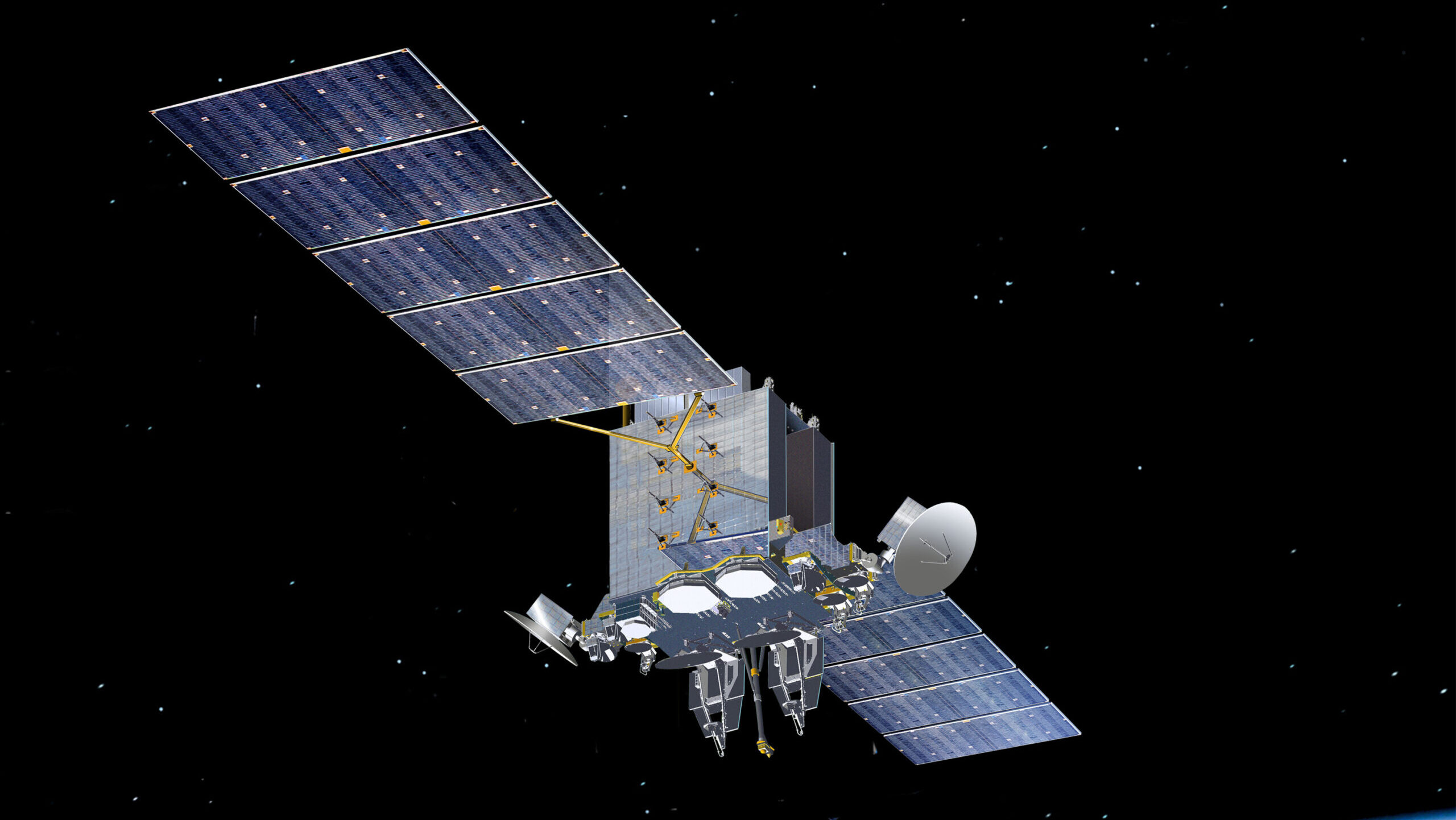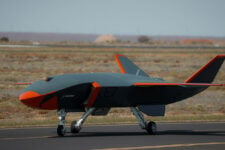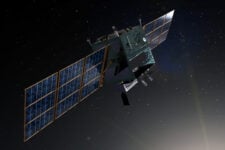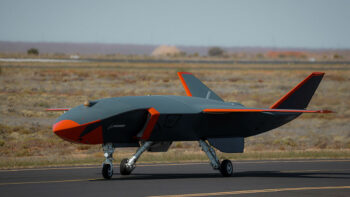
The Advanced Extremely High Frequency System (AEHF) satellites for encrypted military communications. (US Space Force photo)
WASHINGTON — As part of the Space Force’s complex strategy to ensure warfighters on the battlefield can stay securely connected in the face of ever-improving adversary electronic warfare systems, Space Systems Command wants to begin rapid development of a new satellite communications (SATCOM) constellation in fiscal 2025 — with hopes of starting initial operations on orbit in 2028.
The Space Force is asking for nearly $248 million in FY25 research, development, test & evaluation funding for the new program, called Protected Tactical SATCOM-Global (PTS-G), according to the service’s budget justification documents released Monday evening. Another $310 million is planned for FY26. (The effort is designated as Project No. 643722 under the larger Program Element (PE) 1206761SF budget line for Protected Tactical Service.)
“PTS-G is a moderate degree of assured access communications across military Ka-band and X-band using a disaggregated and proliferated sets of lower-complexity satellites. Space Systems Command (SSC) will develop the PTS-G space and ground systems to provide worldwide assured-access communications for tactical warfighters,” the documents explain.
“Initially, PTS-G will provide capabilities in select regions. PTS-G will target a solution that can provide worldwide coverage,” the documents add.
Maj. Gen. Michael Greiner, Air Force deputy assistant secretary for budget, told reporters on Monday that “there will be separate satellites” placed in geosynchronous Earth orbit (GEO) for X-band and military Ka-band communications.
“I think initially right now our plans are for four space vehicles,” he said, but noted that the number “could change over time,” because “we are just getting started on that program.”
The Space Force last January put out a request for information (RFI) from industry to explore options for a new jam-resistant constellation, as a new tier in its Protected Anti-Jam Tactical SATCOM (PATS) family of systems. The FY25 budget documents explain SSC intends to issue a formal request for proposals for PTS-G in the first quarter of FY25, and make an award to one or more vendors in the second quarter.
The overarching PATS program began in 2018 to take over the tactical mission of the current Advanced Extremely High Frequency (AEHF) satellites, which today provide highly encrypted communications for both strategic and tactical needs. The goal of the multi-tiered effort is to provide a resilient SATCOM architecture by using multiple types of satellites with better encryption that are dispersed over various orbits to flummox adversary jamming attempts — with US national security planners fully expecting sophisticated electronic warfare attacks against satellites in future conflicts.
But another reason for the PATS program is that commanders in the field long have complained that the legacy system and other military SATCOM networks cannot provide enough bandwidth for their operational needs — especially with the explosion of data at what the Pentagon likes to call the “tactical edge.”
The new PTS-G constellation thus will “augment” the other satellite and ground-system elements of PATS, which all are based on use of an encrypted signal called the Protected Tactical Waveform.
The Space Force FY25 budget request includes another $348.9 million for PTS payload prototypes, down slightly from the FY24 request of $360 million. Boeing and Northrop Grumman each won contract awards in 2020, worth $191 million and $253 million respectively, to develop those prototypes.
The Boeing prototype payload will be hosted on WGS-11. The WGS-11 satellite is part of the Wideband Global Satcom (WGS) constellation used by all Combatant Commands and nine partner countries: Australia, Canada, Denmark, Luxembourg, Belgium, Netherlands, New Zealand, the Czech Republic and Norway.
The Northrop Grumman prototype will be integrated on a Northrop Grumman ESPAStar-HP satellite, which is an upgraded variant of the company’s Evolved Expendable Launch Vehicle Secondary Payload Adaptor platforms optimized for use in the GEO belt.
“These prototyping payloads (PTS-P) demonstrate innovative AJ [anti-jam] technologies with modular and scalable payloads to meet validated military needs for protected tactical communications,” the budget documents say. “The PTS Engineering, Manufacturing, and Development (EMD) Phase, called PTS-Resilient (PTS-R), will follow the PTS-P Phase to develop purpose-built ‘hub in space’ satellites with full signal processing and switching capability that allows direct connectivity between users.”
Finally, the Space Force is asking for a total of $79.7 million, up from $76.5 in FY24, for the PATS ground system elements, collectively called the Protected Tactical Enterprise Service (PTES). PTES aims to enable widespread use of the Protected Tactical Waveform, which eventually will be embedded in payloads carried on US and allied military satellites, as well as commercial birds.






















